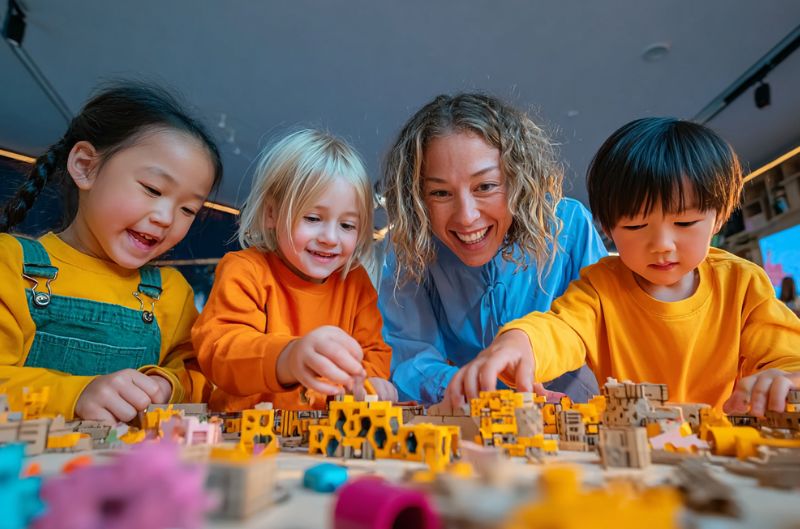
The Role of Gender and Identity in Play
Author: Austin Stanfel
Play is a fundamental aspect of human development, shaping not only cognitive and physical abilities but also profoundly influencing socialization, identity formation, and the internalization of cultural norms. Among the many factors that shape play, gender and identity stand out as particularly powerful, affecting the ways children and adults alike experience, interpret, and engage in playful activities. This article explores the complex relationship between gender, identity, and play, drawing on insights from developmental psychology, sociological theory, and contemporary research.
Early Development: Gendered Play Emerges
1. Gender Differences in Play Preferences
From as early as 18 months, children begin to show preferences for toys and activities that align with societal gender stereotypes. For instance, girls are more likely to gravitate toward dolls and nurturing play, while boys often prefer cars, blocks, and more physically active pursuits. These preferences are not innate but are shaped by a combination of biological predispositions, parental influence, peer interactions, and media exposure.
- Boys tend to engage in active, physical, and sometimes aggressive play, such as sports or adventure-themed games.
- Girls: More often participate in nurturing, verbal, and collaborative play, often centered around domestic scenarios.
2. The Influence of Socialization
Parents, teachers, and peers play a significant role in reinforcing gender-typed play. For example, boys may be encouraged to play outside and take risks, while girls might be steered toward indoor, quieter activities. Clothing and footwear, often unnecessarily gendered, can further restrict or enable certain types of play, with girls’ attire sometimes limiting their physical activity and risk-taking.
Gender Identity and the Construction of Self
1. Formation of Gender Identity
Children learn to identify themselves and others by gender labels at a young age, internalizing societal expectations about what behaviors and interests are appropriate for their gender. This process is influenced by:
- Labelling: Children are often labelled by adults and peers, which can guide their play choices and reinforce gender norms.
- Peer Dynamics: Children tend to select playmates with similar gender-typed interests, reinforcing group identity and sometimes excluding those who do not conform.
2. Gender-Typed Play and Later Outcomes
Research shows that early engagement in gender-typed play can predict future interests and even occupational choices. Children who consistently engage in play typical of their gender are more likely to pursue gender-typical careers and activities in adolescence and adulthood. Conversely, those with more flexible play experiences may develop broader interests and a more adaptable sense of self.
Identity Play: Beyond Gender
1. The Concept of Identity Play
Identity play refers to the active exploration and trial of different roles, selves, and possibilities through play. This process is crucial not only for children but also for adults, as it provides a safe space to explore new identities, perspectives, and narratives.
- Role-Playing Games: These provide opportunities for individuals to embody characters different from themselves, fostering empathy, creativity, and self-discovery.
- Therapeutic and Educational Contexts: Play is used in therapy to help individuals explore aspects of their identity, resolve internal conflicts, and build social skills.
2. Narrative and Social Identity
Play is a site for narrative construction, where individuals create and enact stories that shape their sense of self. The stories we tell and live by during play contribute to our ongoing identity work, helping us make sense of the tensions, transitions, and aspirations that shape our lives. Through play, individuals can negotiate group membership, test boundaries, and develop a sense of belonging or distinctiveness.
The Impact of Gender Stereotypes
1. Restriction and Exclusion
Rigid gender norms can limit the types of play children feel comfortable engaging in, leading to exclusion and reduced opportunities for skill development. Boys who prefer nurturing play or girls who enjoy rough-and-tumble activities may face social sanctions or isolation. This can have lasting effects on self-esteem and social integration.
2. Challenging Stereotypes
Encouraging diverse and inclusive play experiences can help break down gender barriers and promote more equitable development. Facilitating mixed-gender play, providing a variety of toys and activities, and challenging stereotypes in media and education are key strategies for fostering a more inclusive environment.
Play, Power, and Social Dynamics
Play is not only a site for fun and learning but also a space where power relations and social hierarchies are enacted and negotiated. Gendered expectations can shape who leads, who follows, and who is included or excluded in group play. Understanding these dynamics is crucial for educators and caregivers who aim to create more equitable and supportive play environments.
Conclusion
The role of gender and identity in play is multifaceted, influencing not only the activities children and adults choose but also shaping broader patterns of socialization, self-concept, and opportunity. By recognizing and addressing how gender norms and identity processes influence play, we can create environments that support the healthy development of all individuals, enabling greater creativity, resilience, and inclusivity in both childhood and beyond.
Key Takeaways:
- Gendered play preferences emerge early and are shaped by socialization.
- Play is a powerful context for identity formation and exploration.
- Rigid gender norms can restrict play and limit development.
- Inclusive and diverse play environments promote healthy identity development and social integration.
By understanding the intricate relationship between gender, identity, and play, we can better support the growth of confident, creative, and empathetic individuals in a rapidly changing world.

